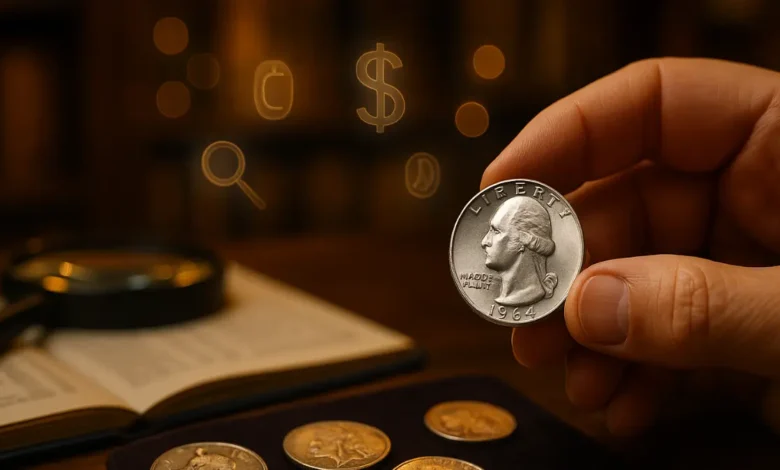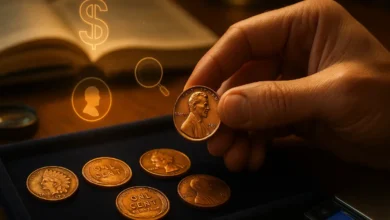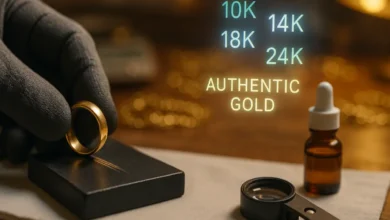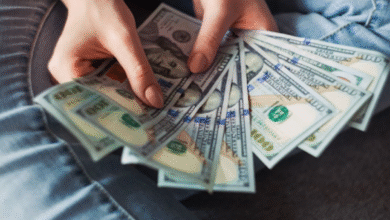Hidden Treasures: Discover Quarters Worth Money in Your Pocket Change

Discover quarters worth money — from rare mint errors to historical designs. Learn how to identify valuable coins, spot hidden gems, and understand what makes certain quarters worth far more than face value.
Introduction: The Fascination of Quarters Worth Money
Every day, millions of quarters pass through our hands — at vending machines, parking meters, or cash registers — and most people never stop to wonder if one of them might be worth a small fortune. Yet within those stacks of twenty-five-cent coins, rare and valuable pieces are waiting to be found. Collectors call these “quarters worth money,” and their stories blend history, artistry, and economics into one shining piece of metal.
Quarters are among the most collected coins in the United States. Their combination of durability, historical design changes, and widespread circulation make them a perfect field for treasure hunters. Some quarters worth money fetch hundreds, even thousands of dollars depending on condition, rarity, and minting errors. What was once pocket change can quickly become a collector’s prize.
The Origins of the American Quarter
The story of the quarter begins in 1796 when the U.S. Mint produced its first twenty-five-cent coin. Early quarters were made of silver and featured the image of Liberty on the front. Back then, few Americans imagined that centuries later, these same coins would become highly coveted collectibles.
Throughout American history, the quarter has evolved through several iconic designs. From the early Draped Bust series to the Barber, Standing Liberty, and finally the Washington quarter, each era reflects its time — politically, artistically, and technologically. Many of these designs are no longer produced, and surviving examples are rare. The combination of low mintage numbers and age makes them particularly valuable to collectors.
The Washington Quarter: A Collector’s Favorite
Introduced in 1932 to honor George Washington’s 200th birthday, the Washington quarter became an enduring symbol of American coinage. Its design by sculptor John Flanagan has remained largely unchanged, though materials and mint marks have evolved.
Before 1965, all Washington quarters were struck in 90% silver. When silver prices rose in the mid-1960s, the U.S. Mint switched to a copper-nickel composition. As a result, older silver quarters instantly gained value beyond their face amount. Even today, a pre-1965 Washington quarter can be worth several dollars in silver alone.
Collectors particularly seek key dates such as the 1932-D and 1932-S quarters — the first year of issue and two of the lowest mintage runs in the series. These are the foundation of any serious Washington quarter collection and often command hundreds of dollars in fine condition.
Why Some Quarters Are Worth Money
Not all quarters are created equal. The difference between a regular twenty-five-cent coin and one worth hundreds lies in three main factors: rarity, condition, and mint errors.
Rarity often stems from limited production or survival rates. A quarter minted in small quantities, or one that saw little circulation, becomes harder to find over time. Condition, measured by a grading scale from “Poor” to “Mint State,” greatly affects value. A pristine coin with no scratches or wear will always fetch more.
Finally, mint errors — mistakes made during production — can dramatically increase value. Off-center strikes, doubled dies, missing mint marks, or misaligned layers all create unique coins that collectors prize. In some cases, these minting errors transform an ordinary quarter into a rare piece worth thousands.
Famous Quarters Worth Money
Below is a table highlighting some of the most valuable quarters ever discovered in U.S. circulation.
| Quarter Type | Year & Mint Mark | Material/Feature | Approximate Value (Depending on Condition) |
|---|---|---|---|
| Washington Quarter | 1932-D | 90% Silver | $200 – $1,000+ |
| Washington Quarter | 1932-S | 90% Silver | $150 – $500+ |
| Standing Liberty Quarter | 1916 | 90% Silver | $3,000 – $15,000+ |
| Barber Quarter | 1896-S | 90% Silver | $1,000 – $25,000+ |
| Washington Quarter Error | 1964-D Double Die | 90% Silver | $400 – $1,200 |
| Washington Quarter (No Mint Mark) | 1983 | Copper-Nickel | $200+ (Uncirculated) |
| State Quarter Error | 2004-D Wisconsin Extra Leaf | Copper-Nickel | $300 – $1,500 |
| Bicentennial Quarter | 1976 Silver Proof | 40% Silver | $10 – $500+ |
| Washington Quarter | 1943-S Doubled Die Obverse | 90% Silver | $500 – $2,000 |
| Standing Liberty Quarter | 1927-S | 90% Silver | $500 – $2,000+ |
These coins illustrate how small differences — a mint mark, a production flaw, or a specific year — can dramatically affect a quarter’s value.
Understanding Mint Marks and Where to Find Them
A mint mark is a small letter that tells collectors where a coin was produced. On U.S. quarters, the mint mark is usually located on the obverse side near Washington’s ponytail or under the eagle (depending on the design).
Common mint marks include:
- P for Philadelphia
- D for Denver
- S for San Francisco
- W for West Point (used in limited editions)
Coins without a mint mark are typically from Philadelphia. However, some older coins were mistakenly produced without mint marks when they should have had them — and those are especially valuable.
Silver Quarters: Timeless Pieces of Value
Before 1965, quarters were composed of 90% silver and 10% copper. This simple detail means even a worn coin from that period holds intrinsic metal value far beyond twenty-five cents. As silver prices fluctuate, so too does the base value of these coins.
For example, when silver is valued at $25 per ounce, the melt value of one pre-1965 quarter is roughly $4.50. Multiply that by a handful of coins, and you could unknowingly have a small collection of precious metal. Collectors still cherish these coins for their historic feel and superior weight compared to modern quarters.
Silver quarters worth money often include early Washingtons, Standing Liberties, and Barber quarters. Their artistry, combined with precious metal content, ensures they remain enduring favorites in the coin world.
State Quarters and Their Hidden Treasures
Between 1999 and 2008, the U.S. Mint released the State Quarters Program — fifty designs celebrating each state’s unique history and culture. These coins reinvigorated interest in numismatics and introduced millions of people to collecting.
Most state quarters are common, but a few rare varieties emerged due to minting errors. The 2004-D Wisconsin Extra Leaf quarter, for instance, shows an extra leaf on the ear of corn — a subtle mistake that dramatically increased its value. Depending on its condition, it can sell for hundreds or even over a thousand dollars.
Other error quarters from the state series include double-die strikes and missing mint marks. Though their face value is small, collectors actively seek them out, making them some of the most recent quarters worth money.
The Bicentennial Quarter: A Nostalgic Favorite
In 1976, America celebrated its 200th birthday, and the U.S. Mint released a special Bicentennial quarter featuring a colonial drummer on the reverse. While billions were made, certain silver-clad proof versions hold significant collector interest.
The Bicentennial design was struck in both 40% silver and standard copper-nickel. Proof sets and special mint issues are worth more, especially if preserved in original packaging. Although not the rarest of quarters, these coins remain beloved for their design and patriotic meaning.
Collectors sometimes find high-grade Bicentennial quarters that can fetch impressive sums at auction. Those struck in silver and kept uncirculated are especially desirable — a blend of nostalgia and numismatic value.
Modern Quarters Worth Collecting
Even contemporary quarters can hold surprising value. Limited editions, experimental materials, and low-mintage designs continue to appear. For instance, America the Beautiful quarters, introduced in 2010, showcase national parks and monuments with beautiful detail. Certain low-production issues and error varieties have already gained collector traction.
Similarly, the 2020-W quarters, minted at West Point with a “W” mark, were released in limited quantities and placed into circulation randomly — creating a modern treasure hunt. Some uncirculated 2020-W quarters are already selling for hundreds of dollars due to their scarcity and novelty.
How to Identify Quarters Worth Money
Identifying valuable quarters takes patience, good lighting, and sometimes magnification. Start by examining:
- The Year — Older coins, especially pre-1965, are often silver.
- The Mint Mark — Look for D, S, or rare W marks.
- Condition — Coins without scratches, wear, or discoloration hold higher value.
- Errors — Check for doubling, missing marks, or unusual textures.
It helps to use a jeweler’s loupe or magnifying glass to inspect finer details. A coin guidebook or online database will help cross-reference specific varieties. Over time, your eye becomes trained to spot potential rarities quickly.
Grading and Preserving Valuable Quarters
Condition is everything in coin collecting. Professional grading services such as PCGS (Professional Coin Grading Service) and NGC (Numismatic Guaranty Company) assign standardized grades that determine market value.
Grading ranges from “Poor” (barely identifiable) to “Mint State” (flawless). Even a small increase in grade can multiply a coin’s worth. For example, a Washington quarter graded MS-65 can be ten times more valuable than one graded VF-30.
To preserve quarters worth money, handle them carefully by the edges, avoid cleaning them with chemicals, and store them in protective holders. Cleaning can actually reduce value, as collectors prefer coins in original condition.
The Market for Valuable Quarters
The coin market thrives on rarity and demand. Auction houses, online marketplaces, and numismatic shows all provide venues for trading valuable quarters. Prices can fluctuate based on collector interest, silver value, and the discovery of new varieties.
For those new to collecting, it’s wise to research recent sales and consult professional appraisers. Certain quarters — such as the 1916 Standing Liberty or 1932-D Washington — have steadily increased in value over decades, proving that numismatics can be both a hobby and an investment.
Expert Quote
“Every coin tells a story. Some are reminders of history, others are accidents of chance. But all quarters worth money share one thing — they connect us to the past in a tangible way.”
— John Mercer, Numismatist and Author of “American Coin Legends”
Quick Reference: Signs of a Quarter Worth Money
| Feature | What to Look For | Why It’s Valuable |
|---|---|---|
| Silver Composition | Dated before 1965 | Contains real silver |
| Rare Mint Mark | D, S, or W | Limited production |
| Mint Errors | Double die, missing letters | Unique, one-of-a-kind |
| Proof Finish | Mirror-like surface | Collector’s edition |
| Limited Edition | West Point or America the Beautiful | Scarce circulation |
Collecting Tips for Beginners
Start small — sort through your change jar or bank rolls. Many collectors began by searching circulation coins. As you gain experience, invest in tools such as coin holders, albums, and reference books.
Join local coin clubs or online forums to exchange knowledge and trades. Learning from others can save you from costly mistakes and introduce you to new collecting opportunities. Always verify authenticity before buying rare coins, as counterfeits occasionally appear in online marketplaces.
The Thrill of Discovery
Part of the fun in collecting quarters worth money is the hunt itself. Every time you receive change, you hold the possibility of uncovering something special. Stories abound of people finding rare coins in old drawers, jars, or even supermarket change.
Collectors often describe the excitement of spotting a unique mint mark or error as “coin fever.” This thrill keeps the numismatic community vibrant and constantly growing. Whether you’re in it for the history, the profit, or the passion, coin collecting offers endless discovery.
Frequently Asked Questions
Q1. How do I know if my quarter is worth money?
Check the date, mint mark, and condition. Use a coin guide or online resource to identify rare varieties. Coins before 1965 or those with visible minting errors are usually good candidates.
Q2. Are all silver quarters valuable?
Yes, but value depends on condition and rarity. At minimum, pre-1965 silver quarters have melt value for their silver content. Certain dates and mint marks are worth much more.
Q3. What are the most valuable quarters?
Some of the top examples include the 1916 Standing Liberty, 1932-D Washington, 1932-S Washington, and 2004-D Wisconsin Extra Leaf quarters.
Q4. Where can I sell valuable quarters?
Reputable options include coin shops, auctions, or certified dealers. Online platforms like eBay and Heritage Auctions also cater to collectors but require caution and authentication.
Q5. Should I clean my old quarters before selling them?
No. Cleaning can lower their value. Collectors and grading services prefer coins in their original, unaltered condition.
Conclusion: Every Quarter Has a Story
In the end, quarters worth money are more than just currency — they’re tiny pieces of American history. Whether silver, error-struck, or limited edition, each one connects us to a specific time and place.
From the hands of early 20th-century workers to modern collectors, quarters continue to tell stories of change, innovation, and value. So next time you get a handful of coins, take a closer look — your next great discovery might just be hiding in plain sight.





